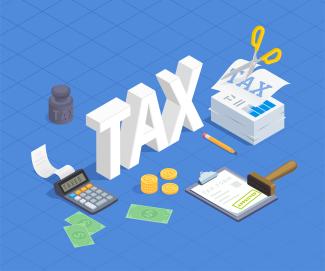
Designed by Freepik
Tax Management Strategies for Non-Retirement Accounts: Keep More of Your Own Money
When investing in a non-qualified, non-retirement account (such as an individual, joint, or living trust account), tax management becomes important to ensure your hard-earned dollars aren’t eaten away. A few tax-savvy strategies done in a timely manner can help you hang on to more of your money in the long run, funding your retirement, preserving your legacy, and giving you more control. Let’s look at a few of those strategies. But first, here’s a bit of background to get started.
How Are Non-Retirement Accounts Taxed?
Unlike tax-qualified accounts such as IRAs and 401(k)s, which grow tax-deferred (and potentially tax-free in the case of Roth accounts), non-tax-qualified investment accounts are taxable in the year gain is realized.
- Interest income and non-qualified dividends (often from bonds in funds) are taxed at ordinary income rates.
- Qualified dividends may receive favorable long-term capital gains treatment.
- Capital gains and losses occur when you sell investments inside the account for more or less than their purchase price.
Short-term gains (held less than 12 months) are taxed as ordinary income, while long-term gains (held more than 12 months) are taxed at either 0%, 15%, or 20%, depending on your income and filing status. Understanding these differences can help you plan when to sell investments to minimize taxes.
Harvesting Gains in Low-Tax Years
Tax-loss harvesting and tax-gain harvesting are two powerful strategies that can help you manage your taxable income over time. Harvesting gains can be especially effective in low-income years. By realizing gains when you’re in a lower tax bracket, you can reset your cost basis (the amount that is recorded as your purchase price which is used to determine taxable gains in the future) without paying much (or possibly any) tax. It can make sense to harvest gains when:
- You expect higher income (and higher taxes) in future years.
- Your taxable income qualifies for the 0% capital gains rate (up to $48,600 for single filers and $94,600 for joint filers in 2025).
- You want to rebalance your portfolio while minimizing future tax exposure.
This strategy allows you to lock in a higher cost basis, which can save thousands in future capital gains taxes.
Harvesting Losses to Offset Gains
Tax-loss harvesting involves selling investments that have declined in value to offset capital gains or reduce taxable income. Some key points to remember:
- First match short-term losses with short-term gains and long-term losses with long-term gains. Then combine the total that’s left to give you your cumulative loss that can be carried forward.
- Unused losses can offset up to $3,000 of ordinary income per year.
- Loss carryforwards can be used indefinitely in future years.
- Avoid triggering the wash-sale rule, which disallows a loss if you repurchase the same (or substantially identical) security within 30 days before or after the sale.
This technique can help you reduce your tax bill while staying invested in the market over the long term.
Real-Life Scenarios for Tax-Savvy Investors with non-tax-qualified accounts
Tax strategies work best when they’re tailored to your unique situation. Here are some scenarios where strategic harvesting can make a big difference:
- Large one-time gains: If you sold a home or investment property this year, harvesting losses before year-end can help offset the gain.
- Post-business sale: Business owners can utilize a lower-income year after selling their company by either harvesting gains or IRA conversion.
- Job loss: Could possibly result in a very low income year and a great time for a tax gain harvest.
- Large health related bills (7.5% of AGI): Because the 0% capital gains rate is based on taxable income, if health costs lower your AGI and thus your taxable income, there are likely planning opportunities available.
- Large capital losses harvested in past year(s): Use losses to step up cost basis on accounts with large gains.
- Received an inheritance that included a large capital loss: This is a unique situation but the loss can be used to offset $3,000/year in ordinary income or other realized gains in your non-tax qualified account.
- Gifting appreciated assets: Donating highly appreciated securities directly to charity allows you to avoid capital gains while still receiving a deduction. Deduction depends on AGI.
These techniques can provide flexibility, liquidity, and long-term tax savings.
Reviewing Prior Year Tax Returns
Your prior year tax return can be a goldmine of information for planning ahead. Here at Axiom Wealth Strategies we use a software tool called Holistiplan to help identify possible opportunities such as carried-forward capital losses from prior years and understanding where your income falls within key tax brackets and capital gains thresholds. Regular review ensures you’re not missing opportunities to reduce taxes and improve after-tax performance.
Final Thoughts: Smart Tax Planning = More Wealth Retained
Proactive tax management isn’t about avoiding taxes, it’s about timing, awareness, and strategy. By understanding how your non-retirement investments are taxed and taking advantage of gain and loss harvesting opportunities, you can keep more of your returns working for you. At Axiom Wealth Strategies, we help clients implement personalized tax strategies designed to grow and protect wealth – for peace of mind today and a legacy for tomorrow. Contact us today to see if we can help you keep more of what you earn!
Schedule a 15 minute phone call with Grant Finter

